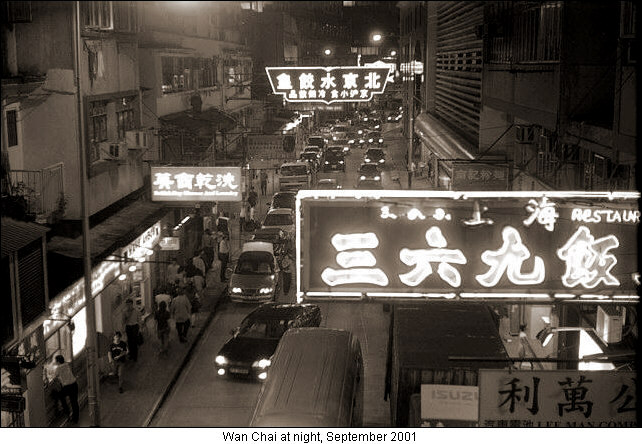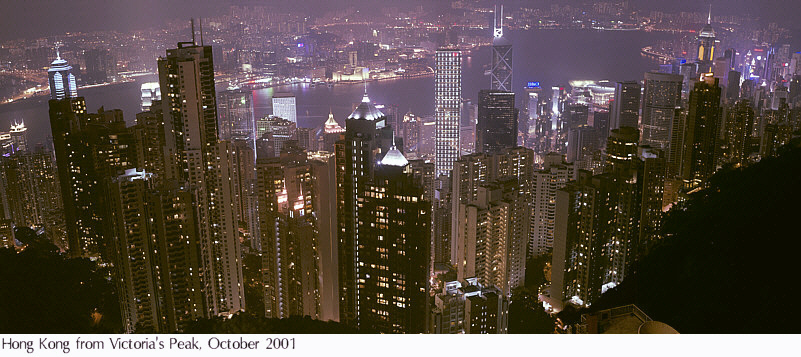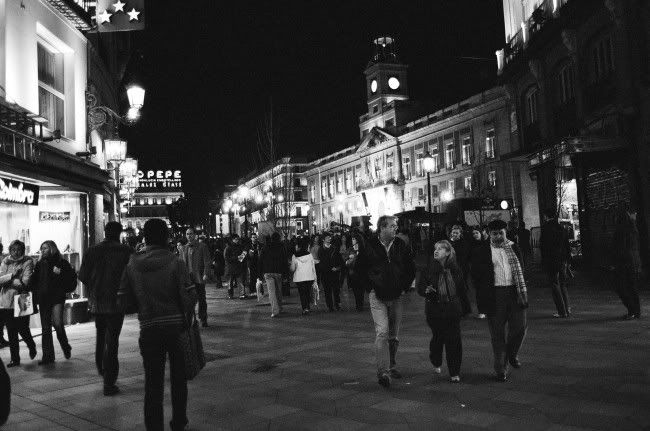Any night photo is going to depend on how many, and what type light sources you have, and then the speed of the film. If you're shooting Tri-X (400 ISO) on a street with lots of overhead lights, and bright storefronts, you might get away with something like f8 at 1/100. But if you only have one point source, like a street corner light, whatever the light is shining on may require f4 at 1/50, but the rest of the scene will be dark. (Above settings are just numerical examples, I don't do much night shooting).
100 ISO is awfully slow for night shooting, and would require a tripod or other way to keep the camera still while the exposure is being made, as the shutter will be open longer than you can hold the camera steady. Your third shot with the Agfa on Auto shows the effect of this, with light trails all over the place.
I suggest you get a good light meter so that you can learn what exposures are needed for any situation. Also study up on the Sunny-16 method of exposure calculation
http://www.davidrichert.com/sunny_16_rule.htm so that if you are using a metered camera, you should be able to tell if it's not reading correctly. Say you are outdoors under a slightly hazy sky, with some ISO 100 speed film in the camera. You would set the shutter to 1/100 (same as the ISO of the film), and the aperture to f11 or f16, depending on how hazy it is. In the shade, you would use an aperture setting of f4. If the ground was snow covered under a cloudless sky, f22 might be more appropriate. But your shutter speed would stay the same.
Now say you think 1/100 is too slow for what you are photographing, like moving vehicles, and you want to freeze the action. Under a sunny sky, you would have f16 @ 1/100 on ISO 100 speed film (or 1/125 if your camera speeds are the modern ones). But to stop the motion in the frame, you need to up your shutter speed to 1/500. This is two stops under your original setting, so you need to open up the aperture two stops to f8. Some cameras have this feature built in, and use an EV (Exposure Value) system for meter readouts, so if you change the shutter speed, the aperture automatically changes a like amount.
On a Kodak Retina IIIC, a setting of 1/125@f16 results in an EV number of 15. The crux of the EV system was that no matter what effect you wanted, freezing action, or increasing background focus, you would always have a perfect exposure. Keep in mind that the smaller the aperture, the more area you have in focus. So when I change the shutter speed setting on the Retina to a faster speed, I will have to be more careful on the focus setting, as there will be a shallower area to work with. But my EV is still 15, because the aperture opened up two stops as I upped the shutter two speeds.
Some folks, such as myself, could care less about using the EV system, since it interlocks the aperture to the shutter, and is just another thing to go wrong on the camera. And in our heads, we like to be able to choose aperture or shutter priority on the fly.
PF



 . If somebody has experience with this camera please help me with the setting for night shooting.
. If somebody has experience with this camera please help me with the setting for night shooting.








